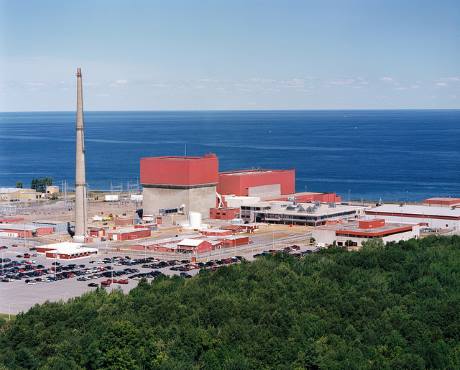Entergy is discussing a potential sale of the James A Fitzpatrick nuclear power plant to Exelon, offering the possibility of keeping the single-unit plant in operation beyond 2017. Exelon has confirmed that it will invest millions of dollars to keep Fitzpatrick and its other nuclear power plants in upstate New York in operation if a support mechanism proposed by the New York State Department of Public Service last week is approved.
 |
| Fitzpatrick (Image: Entergy) |
Fitzpatrick is one of three nuclear power plants in upstate New York - the others are Nine Mile Point and RE Ginna, both owned by Exelon - relied on in the state's proposed Clean Energy Standard (CES) to help provide a so-called bridge to a clean energy future for the state. However, Entergy announced last November its decision to close the single-unit Fitzpatrick boiling water reactor for economic reasons. It subsequently set a closure date of 27 January 2017 for the unit, which is licensed to operate until 2034.
Earlier this year the State of New York Public Service Commission ruled that the CES portfolio must include a support mechanism to ensure that the upstate nuclear power plants - at risk because of the economic challenges from the short-term nature of the deregulated market they operate in and competition from low-cost gas and federally subsidized wind power - continue in operation. Last week, the state's Department of Public Service published its proposed mechanism to achieve that by valuing their zero-emissions attributes based on the social cost of carbon.
Entergy said its discussions with Exelon on a potential sale of Fitzpatrick are consistent with its commitment to consider "any viable option" that would enable the plant to remain in operation. "In keeping with our corporate strategy to move away from merchant power markets and toward a company operating exclusively as a utility in regulated markets, we are working with Exelon to come to commercial terms on a sale transaction that depends largely on the final terms and timeliness of the New York State Clean Energy Standard" Entergy Wholesale Commodities' president Bill Mohl said.
If discussions with Exelon do not result in an agreement on the sale and transfer of ownership of the plant, Entergy said it will move forward with the current plan to cease operations and begin decommissioning.
Ready to invest
Exelon said the proposals in the Department of Public Service's paper, if approved, would help keep its upstate plants running as the state of New York transitions to a 50% zero-carbon energy standard by 2030.
"If the program is approved, we will immediately reinvest approximately $200 million [in Nine Mile Point and Ginna] in the spring and continue to operate. If the program is not approved, we need to go in a different direction," Joseph Dominguez, Exelon executive vice president for governmental and regulatory affairs and public policy, said.
The company confirmed that it is in discussions to buy Fitzpatrick, which an analysis by the New York Public Service Commission earlier this year found to produce more than $1 billion per year in economic value for the state. "The proposed CES program, if approved, will give us the confidence to invest hundreds of millions of dollars in Fitzpatrick in January to refuel the plant and upgrade systems needed to reverse the shutdown decision," Exelon CEO Chris Crane said.
Any transaction between Entergy and Exelon would be subject to the completion of definitive commercial agreements and regulatory approvals.
Researched and written
by World Nuclear News




_18570.jpg)
_18938.jpg)
_33584.jpg)
_82983.jpg)





